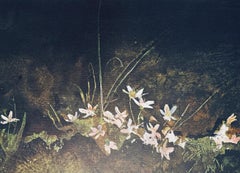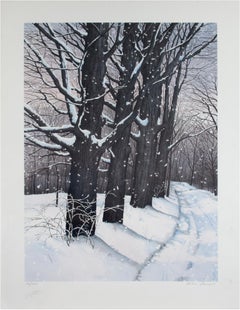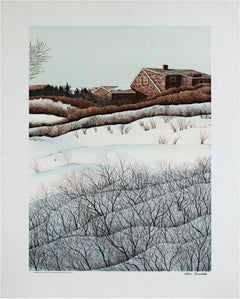Helen Rundell Prints and Multiples
Born in Baldwin, New York in 1935, Helen Rundell loved to draw the creeks and bay inlets of what was then a small country town, complete with its general store. By working in an egg tempera medium, the artist achieves a detail usually discovered only by the lens of a camera, capturing so many views of the Northeast while capturing our hearts. With uncompromising skill and a passion for detail, Helen Rundell has earned a reputation for being the most sought-after artist in the limited edition art market. Rundell succeeds in bringing her subjects to life with uncompromising precision and an innate passion for accuracy. "In some ways, I consider myself an oddity, I don't endure the arduous task of applying detail, I enjoy it,” says the artist. Despite the exacting technical demands Rundell places upon herself, she attributes her international acclaim to the deep emotion she brings to her art. Helen Rundell's work reflects a superbly detailed observation of nature coupled with her exceptional printmaking prowess. Her art allows the viewer to experience the beauty of her natural surroundings, in particular the rugged and charming beauty of the coast, forests, fields and farms of Maine. Helen Rundell's art has merited her many prestigious awards and exhibits in American embassies on four continents. Helen Rundell's prints can be found in the private collections of Sam Snead, Byron Nelson, Ben Crenshaw, Curtis Strange, Tom Kite, Ray Floyd and former U.S. President Gerald R. Ford. It can also be found in prestigious public collections as the Smithsonian Institution, the Nelson A. Rockefeller Collection, the Smithsonian American Art Museum and the United States Military Academy at West Point.
Late 20th Century American Realist Helen Rundell Prints and Multiples
Lithograph
1960s American Realist Helen Rundell Prints and Multiples
Lithograph
1960s American Realist Helen Rundell Prints and Multiples
Lithograph
1960s American Realist Helen Rundell Prints and Multiples
Lithograph
1930s American Realist Helen Rundell Prints and Multiples
Lithograph
1960s American Realist Helen Rundell Prints and Multiples
Lithograph
1960s American Realist Helen Rundell Prints and Multiples
Lithograph
1960s American Realist Helen Rundell Prints and Multiples
Lithograph
1960s American Realist Helen Rundell Prints and Multiples
Lithograph
1960s American Realist Helen Rundell Prints and Multiples
Lithograph
1960s American Realist Helen Rundell Prints and Multiples
Lithograph
1960s American Realist Helen Rundell Prints and Multiples
Lithograph
1930s American Realist Helen Rundell Prints and Multiples
Lithograph
1980s Post-Modern Helen Rundell Prints and Multiples
Lithograph
1980s Helen Rundell Prints and Multiples
Lithograph
1980s Post-Modern Helen Rundell Prints and Multiples
Lithograph



